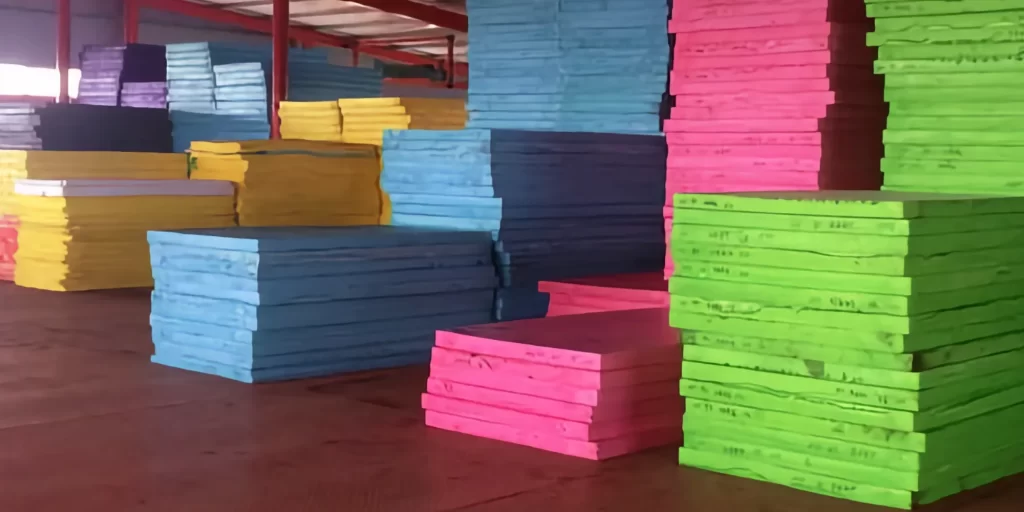Introduction
EVA foam, a versatile and lightweight material, has become a cornerstone in the manufacturing of ski boots. This innovative material offers a blend of durability and flexibility, making it a go-to choice for enhancing the skiing experience. In this article, we will explore the various aspects of EVA foam, its integration into ski boots, and how it contributes to elevating performance and comfort on the slopes.
What is EVA Foam?
Ethylene-Vinyl Acetate (EVA) foam is a closed-cell foam known for its flexibility, resilience, and shock-absorbing properties. It is a copolymer of ethylene and vinyl acetate, which contributes to its rubber-like softness and flexibility. EVA foam is resistant to UV radiation, cracking, and water, making it suitable for outdoor applications. Its versatility extends beyond ski boots, finding applications in sports equipment, packaging, crafts, and more.
Why EVA Foam in Ski Boots?
The integration of EVA foam into ski boots addresses several challenges faced by skiers. The material’s lightweight nature reduces the overall weight of the boots, allowing for more effortless movement and agility on the slopes. EVA foam is renowned for its shock-absorbing capabilities, providing a cushioning effect that minimizes the impact on the feet during skiing. Its heat moldable property is a game-changer, enabling a customized fit by adapting to the unique contours of the wearer’s feet, thereby enhancing comfort and reducing pressure points. Additionally, the insulating properties of EVA foam contribute to keeping the feet warm in cold conditions, which is crucial for skiers.
Benefits of EVA Foam in Ski Boots
- Customized Fit: EVA foam’s heat moldable characteristic allows for a tailored fit, ensuring that the ski boots adapt to the individual’s foot shape, offering unparalleled comfort and support.
- Shock Absorption: The inherent shock-absorbing qualities of EVA foam help in reducing the impact on the feet and joints, allowing skiers to navigate varied terrains with ease.
- Lightweight: The lightweight nature of EVA foam contributes to reducing the overall weight of the ski boots, enabling better mobility and less fatigue during prolonged skiing sessions.
- Insulation: EVA foam offers excellent thermal insulation, keeping the feet warm in freezing temperatures and enhancing the overall skiing experience.
- Durability: Despite its lightweight and flexible nature, EVA foam is incredibly durable, ensuring that the ski boots withstand the rigors of regular use and harsh weather conditions.
- Water Resistance: The water-resistant properties of EVA foam prevent moisture ingress, keeping the feet dry and comfortable.
Real-World Applications
In the world of skiing, several brands have recognized the advantages of EVA foam and incorporated it into their ski boot designs. Palau, for instance, has introduced ski boot liners such as the Tour Lite Pro Liners and Alpine Power Fit HV, which utilize EVA foam for its heat moldable properties and high performance. These liners are designed to strike a balance between touring efficiency and downhill performance, offering skiers versatility and adaptability. The real-world application of EVA foam in ski boots by renowned brands is a testament to its effectiveness in enhancing both comfort and performance on the slopes.
Technical Aspects of EVA Foam in Ski Boots
EVA foam used in ski boots is available in various densities and forms to cater to different performance requirements. Products like EVA MD® and EVA HD® are specifically designed to offer varying degrees of firmness and cushioning. The foam is highly receptive to heat molding, allowing for a customized fit. Additionally, the technical fabrics used in conjunction with EVA foam are sourced from Europe, adhering to high standards of quality and compliance. These technical aspects ensure that EVA foam meets the diverse needs of skiers, providing a tailored skiing experience.
Addressing Potential Limitations
While EVA foam offers a plethora of benefits, it is also crucial to acknowledge and address any potential limitations. Some users might have concerns regarding the durability of EVA foam, especially when subjected to extreme conditions. However, reputable brands mitigate this by sourcing high-quality EVA foam from trusted manufacturers, ensuring the material’s longevity and reliability. By addressing these concerns and continuously innovating, manufacturers strive to provide ski boots that meet the highest standards of quality and performance.
Choosing the Right Ski Boots with EVA Foam
Selecting the right ski boots with EVA foam involves considering several factors. Skiers should assess the fit, comfort, performance needs, and the reputation of the brand. Brands like Palau offer a diverse range of ski boots featuring EVA foam, each with unique features and technologies to cater to different skiing styles and preferences. By evaluating these factors and understanding individual needs, skiers can make informed decisions and choose ski boots that enhance their skiing experience and meet their performance expectations.
Conclusion
The integration of EVA foam into ski boots has marked a significant advancement in the skiing industry. With its unique properties such as adaptability, shock absorption, and customizability, EVA foam has proven to be a valuable asset in ski boot design. By opting for high-quality products from reputable brands, skiers can leverage the myriad benefits that EVA foam offers, ensuring a comfortable, enjoyable, and high-performance skiing experience.






